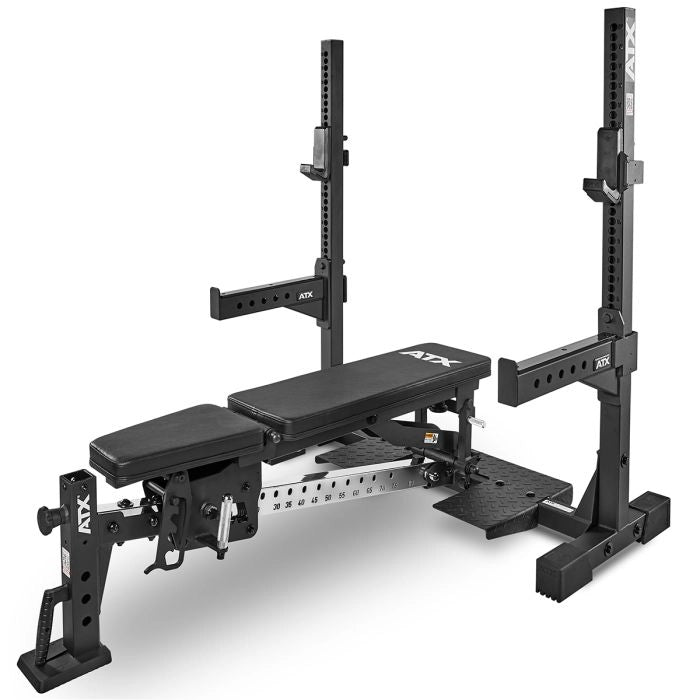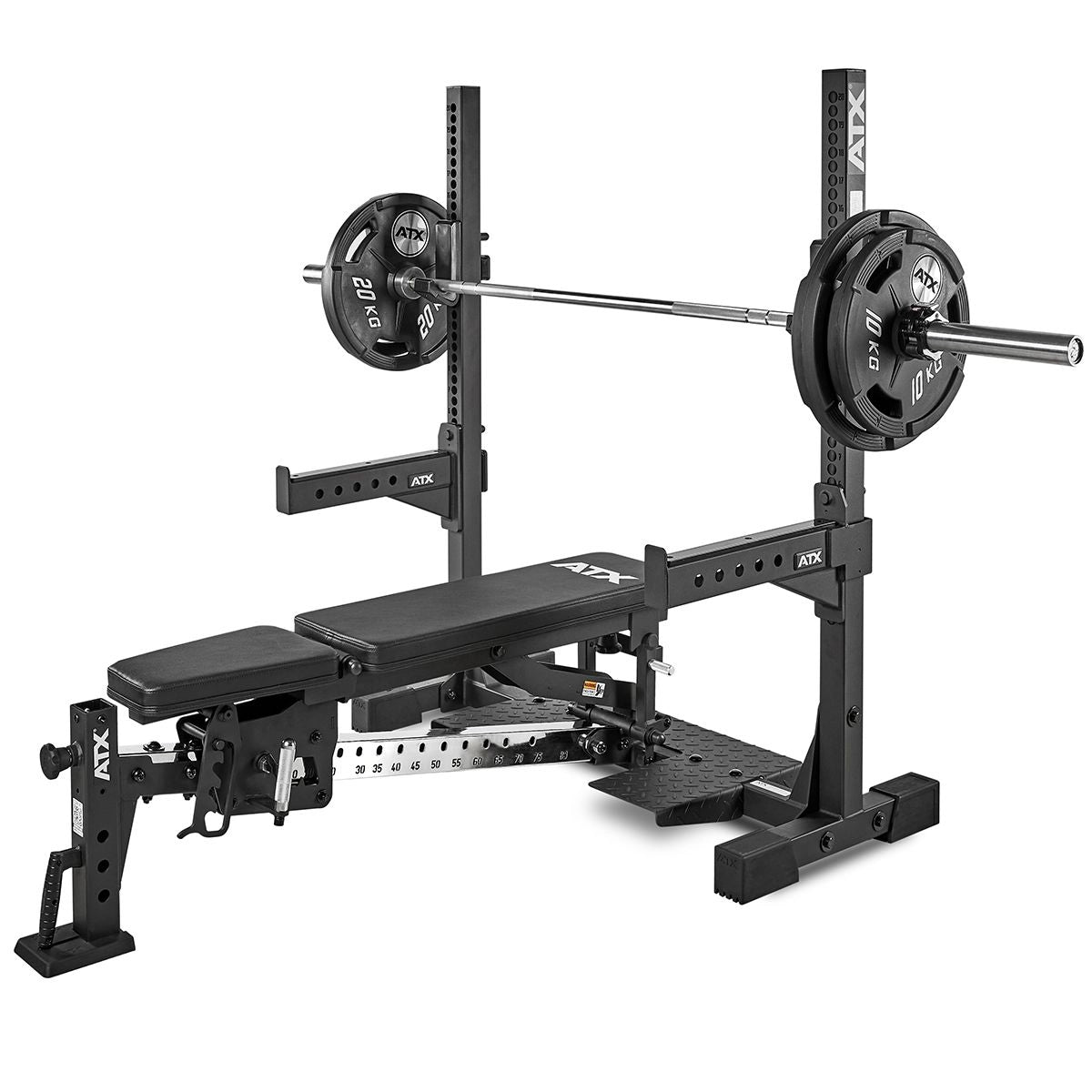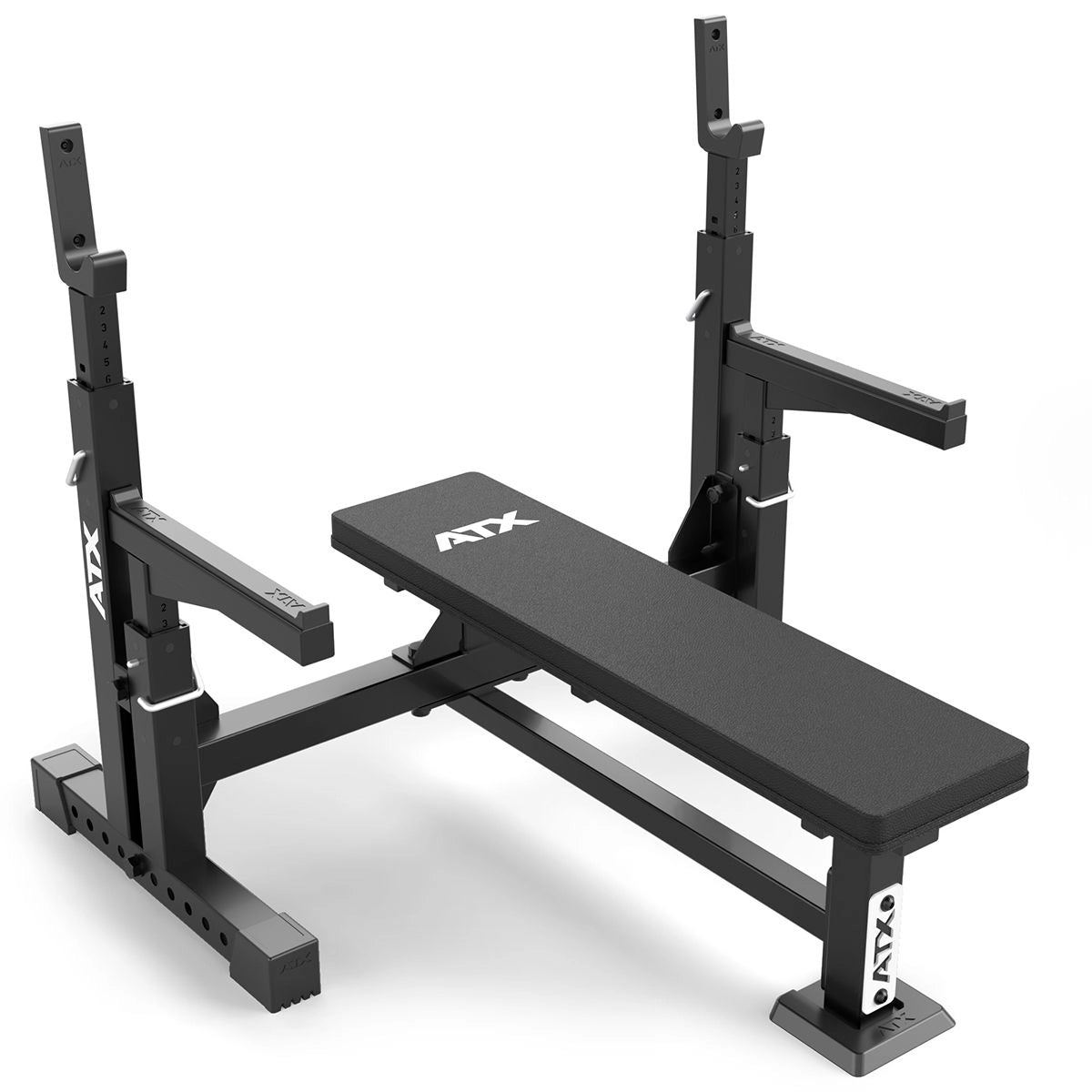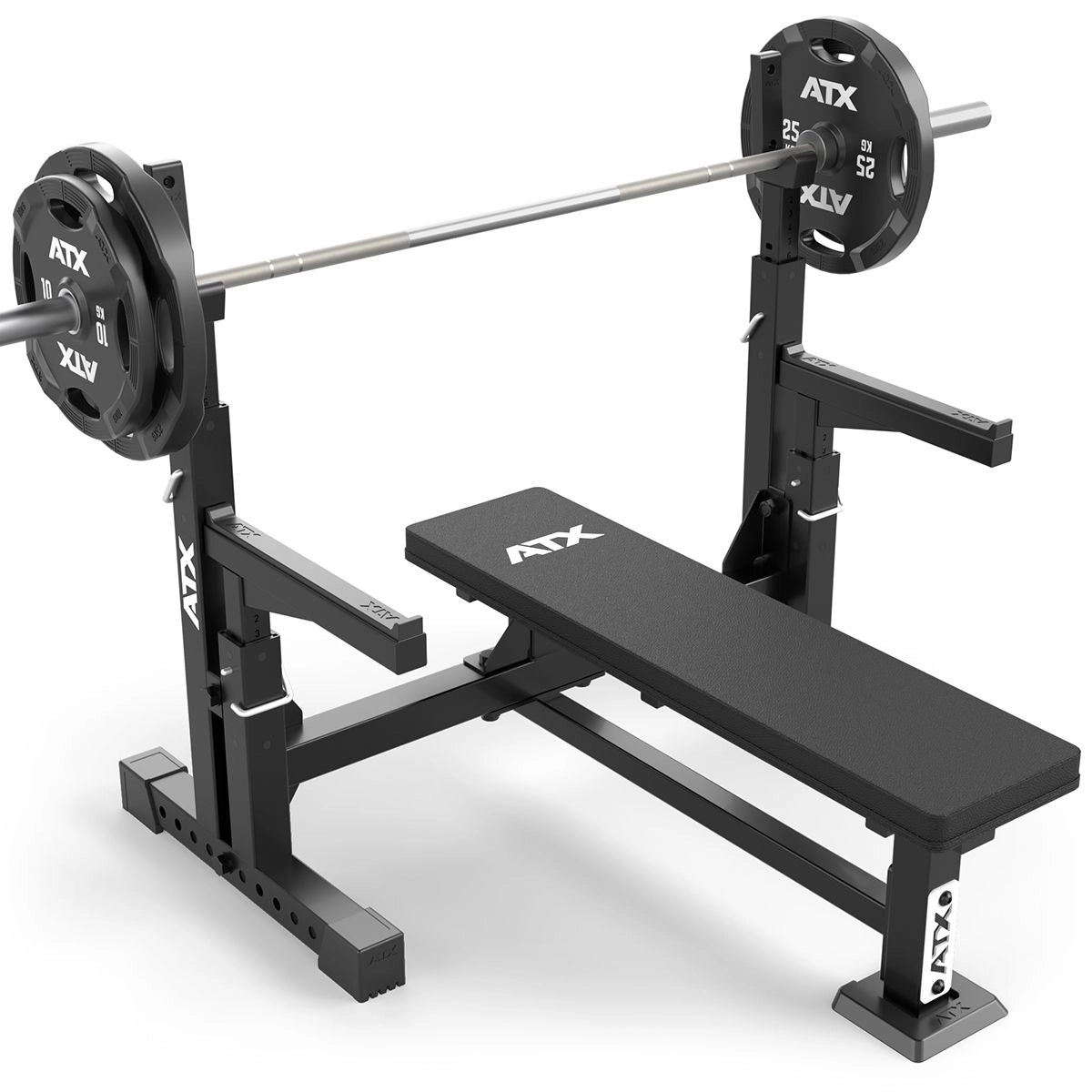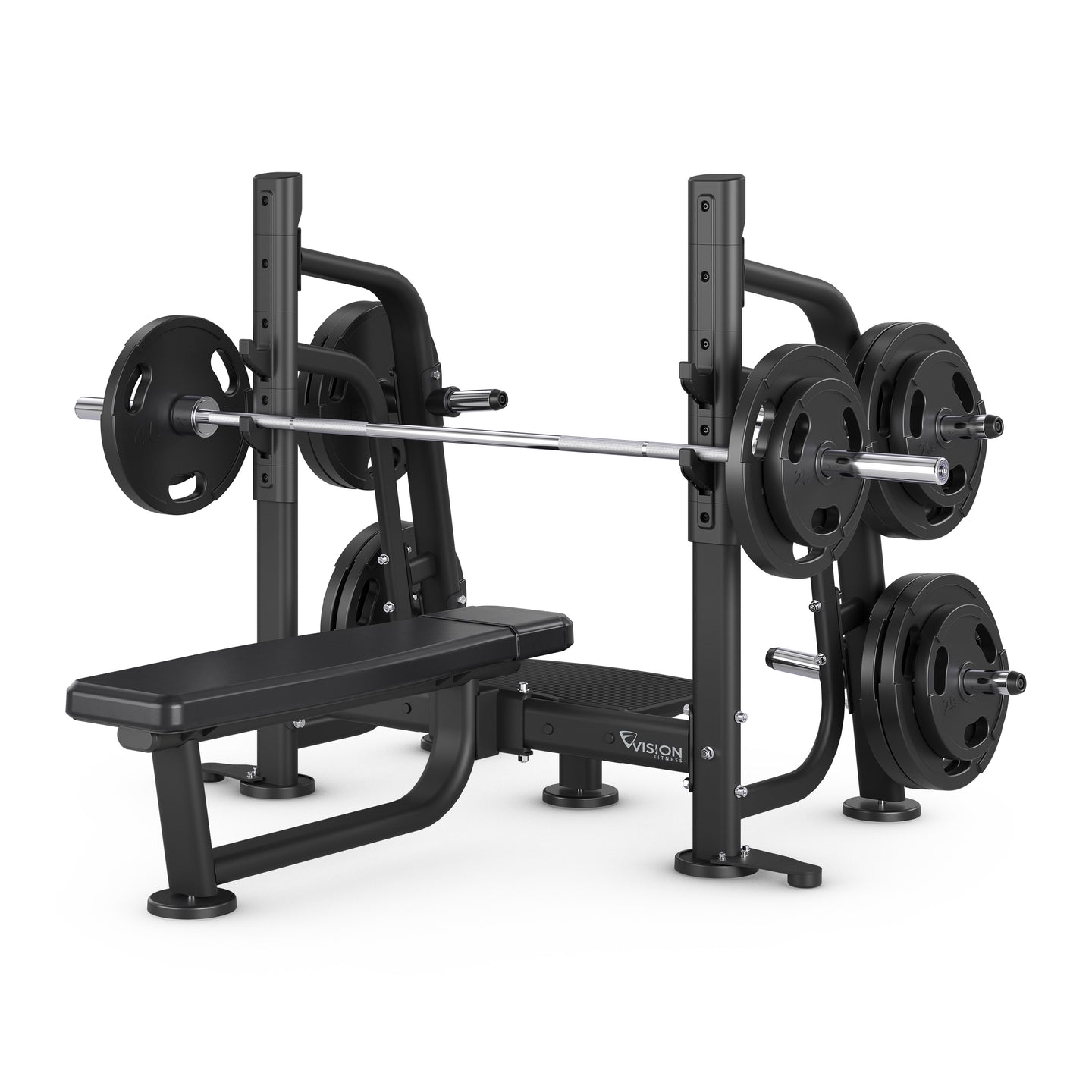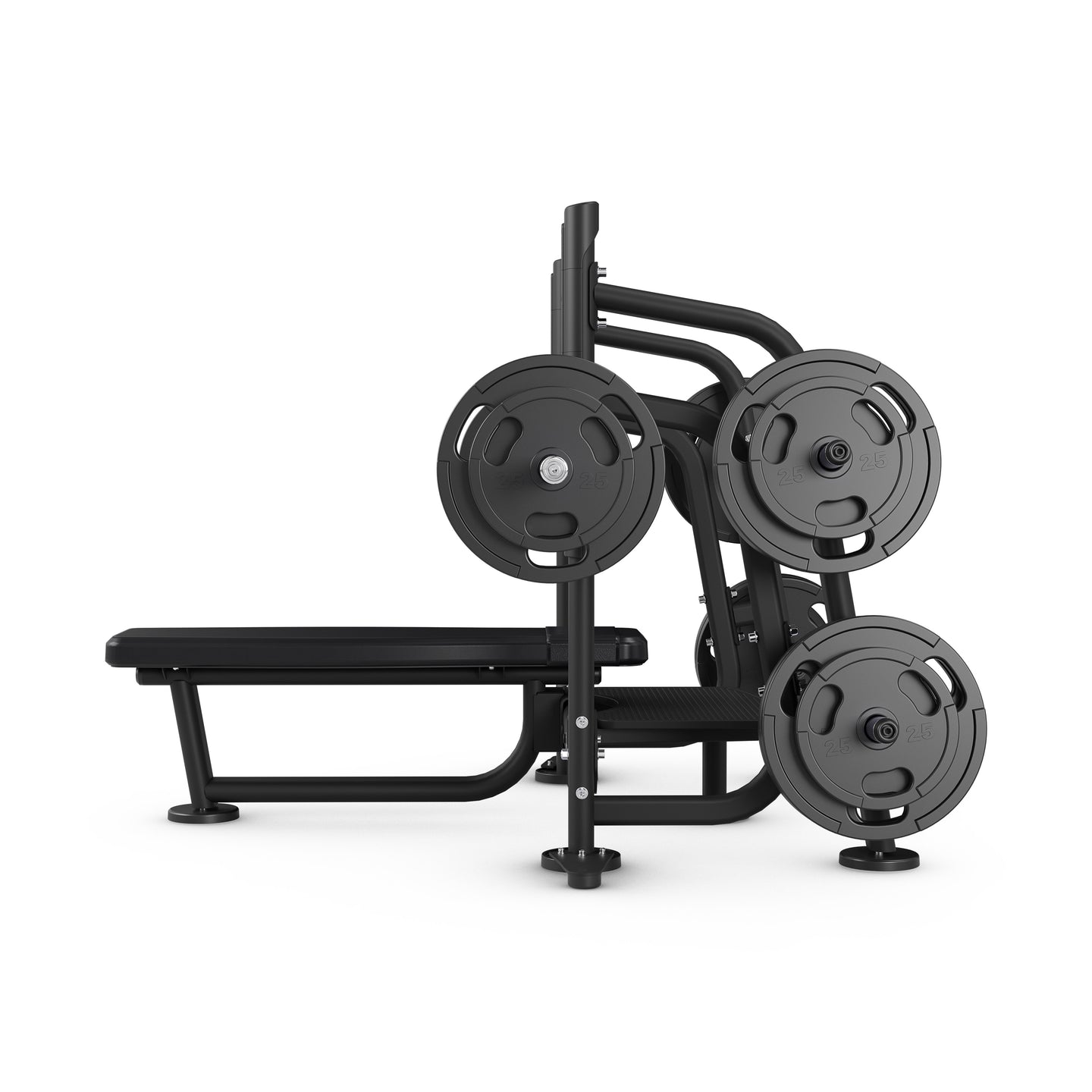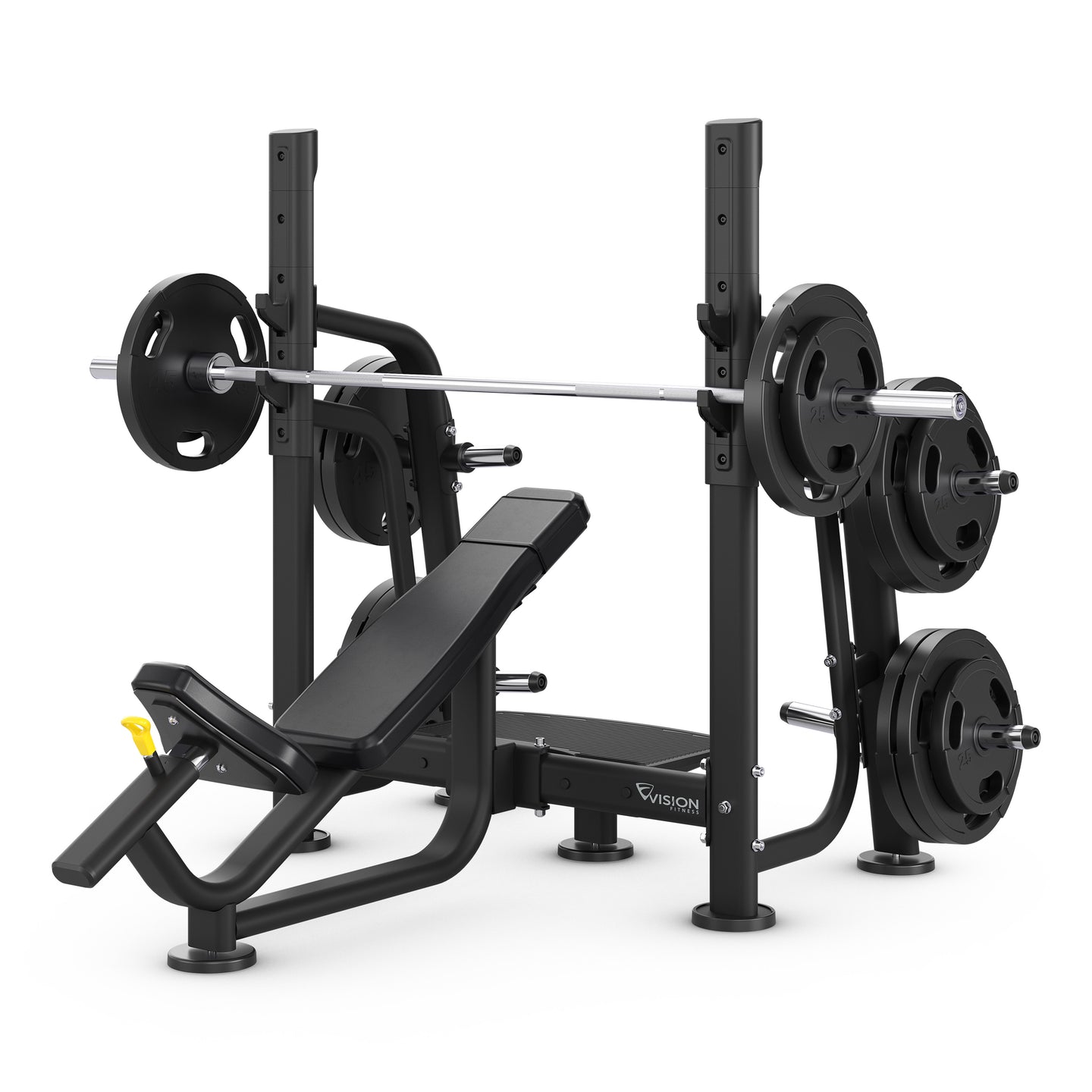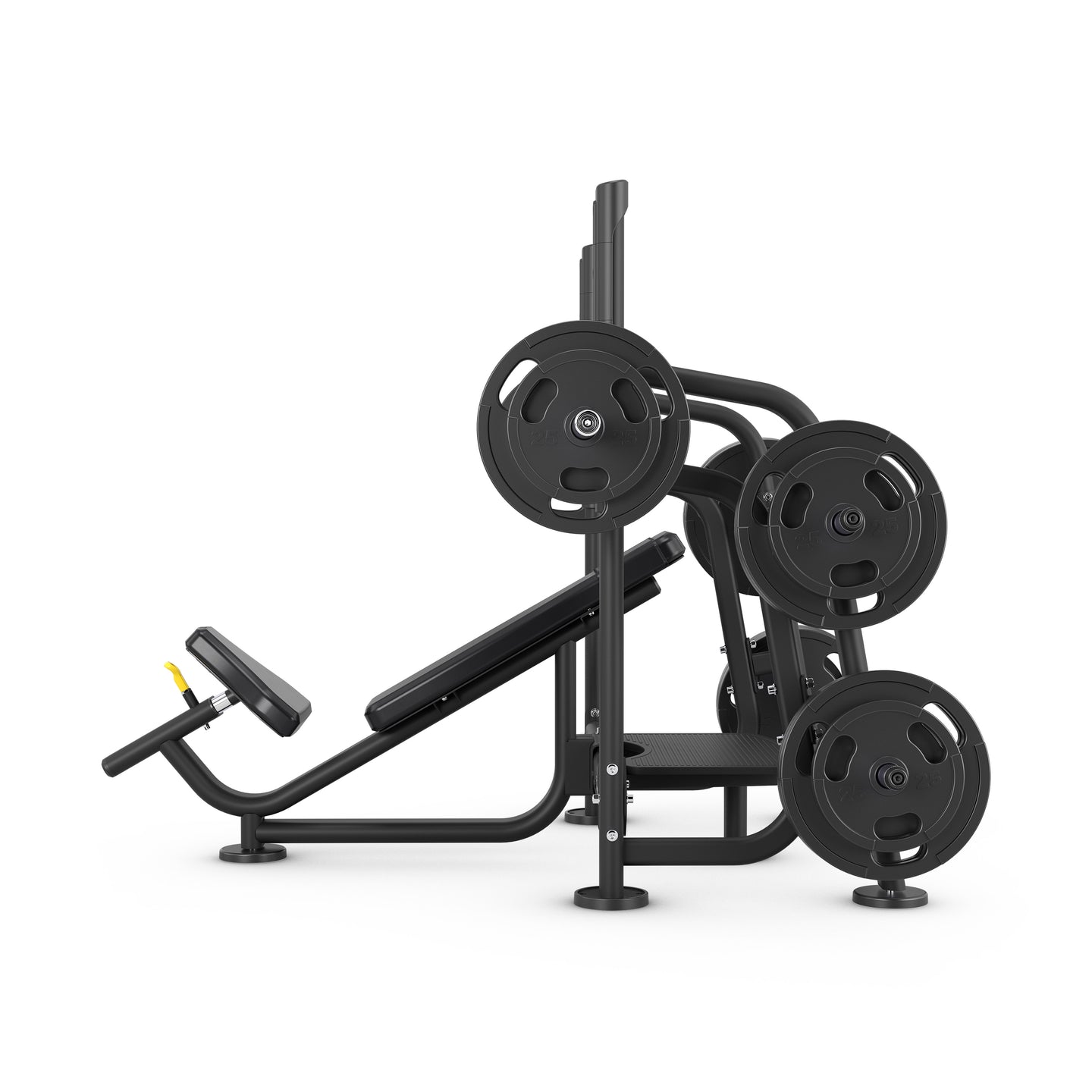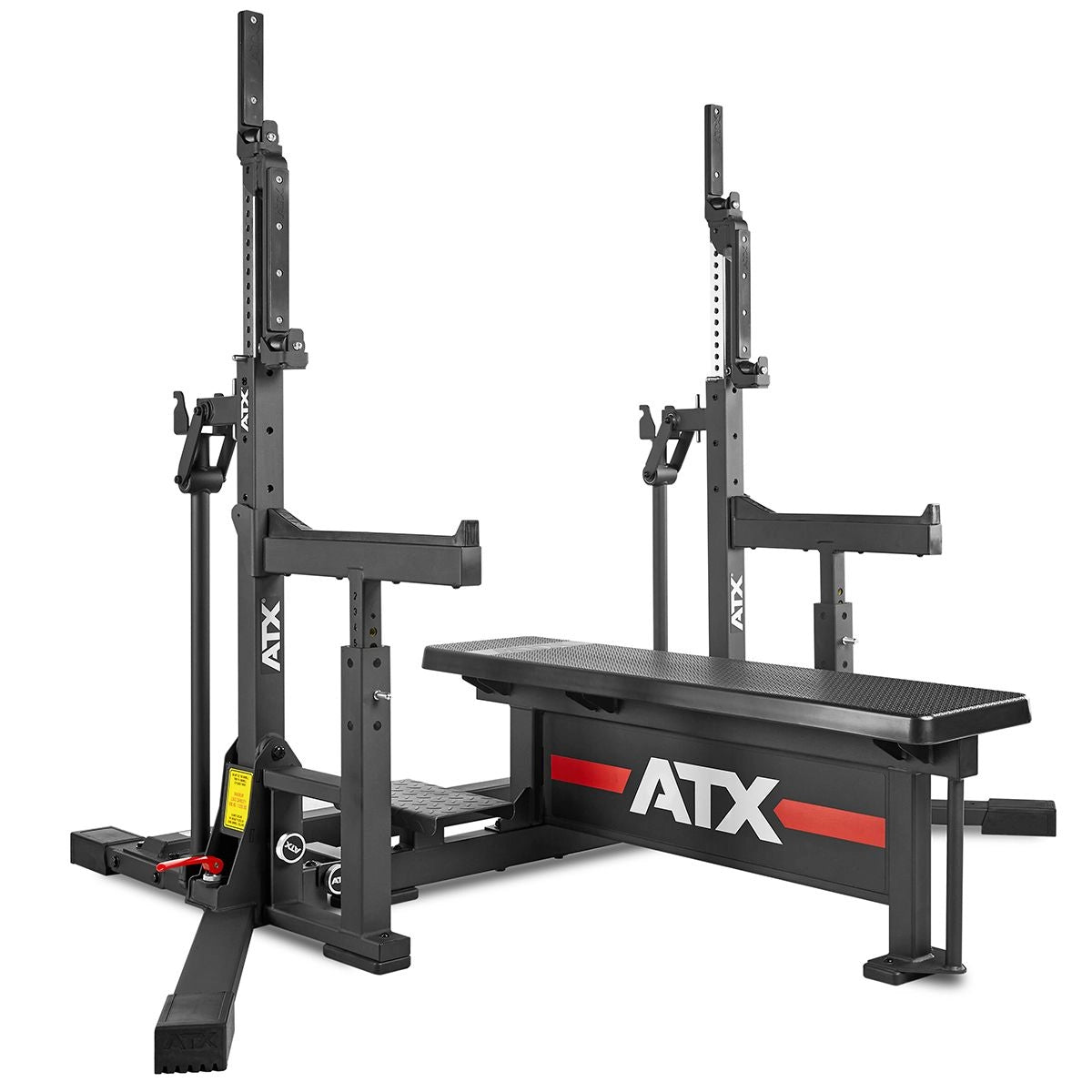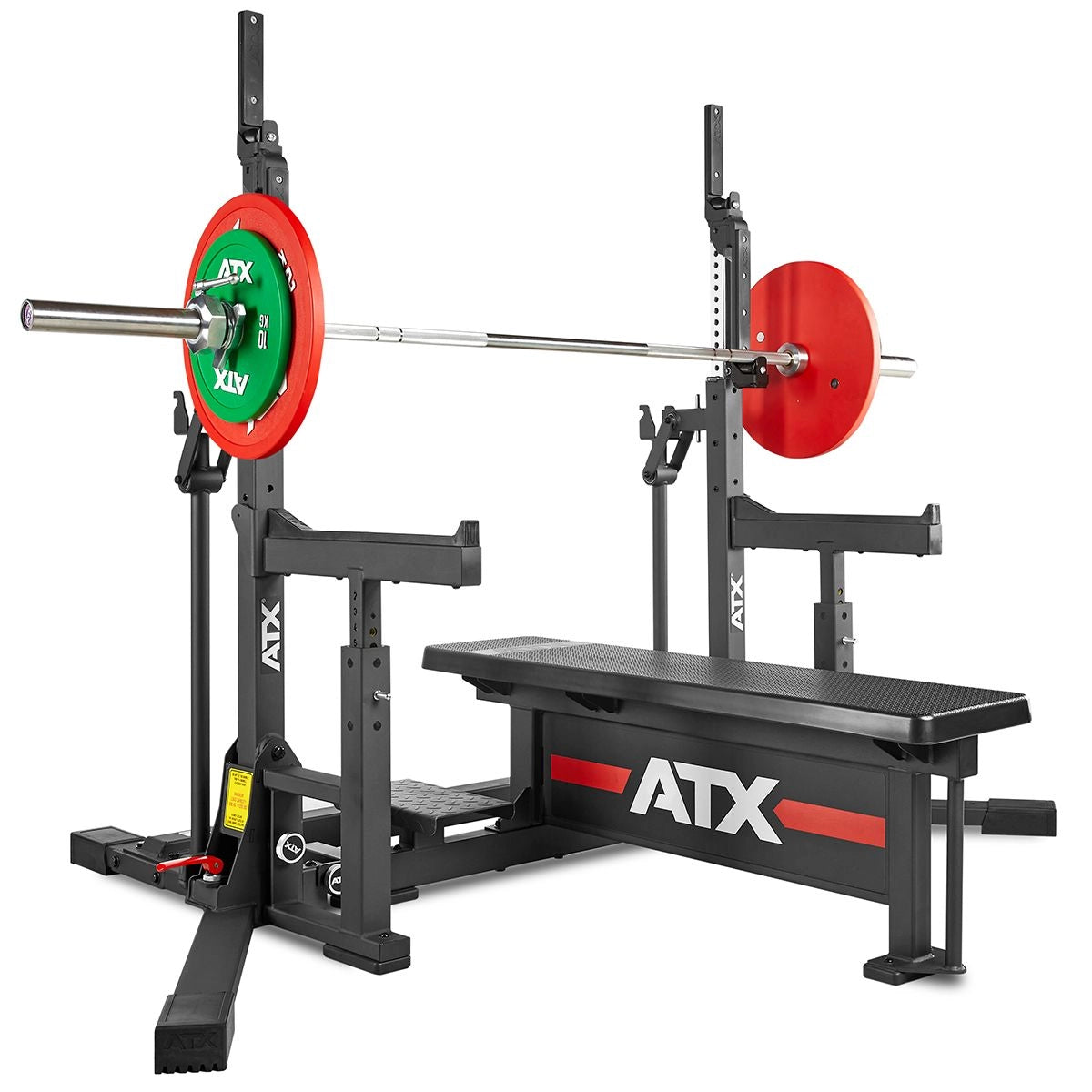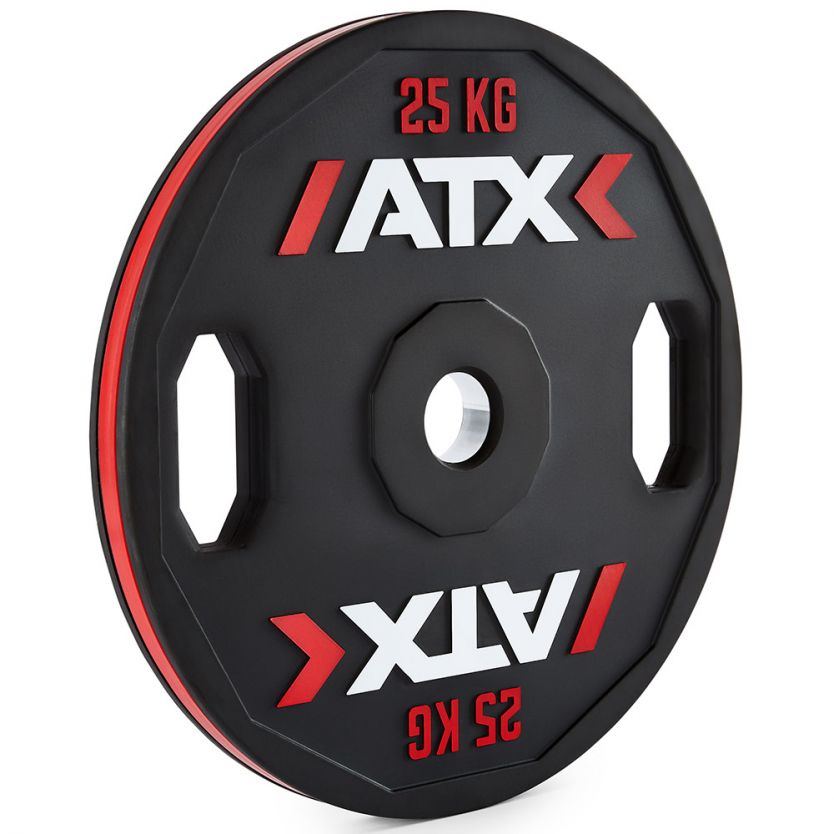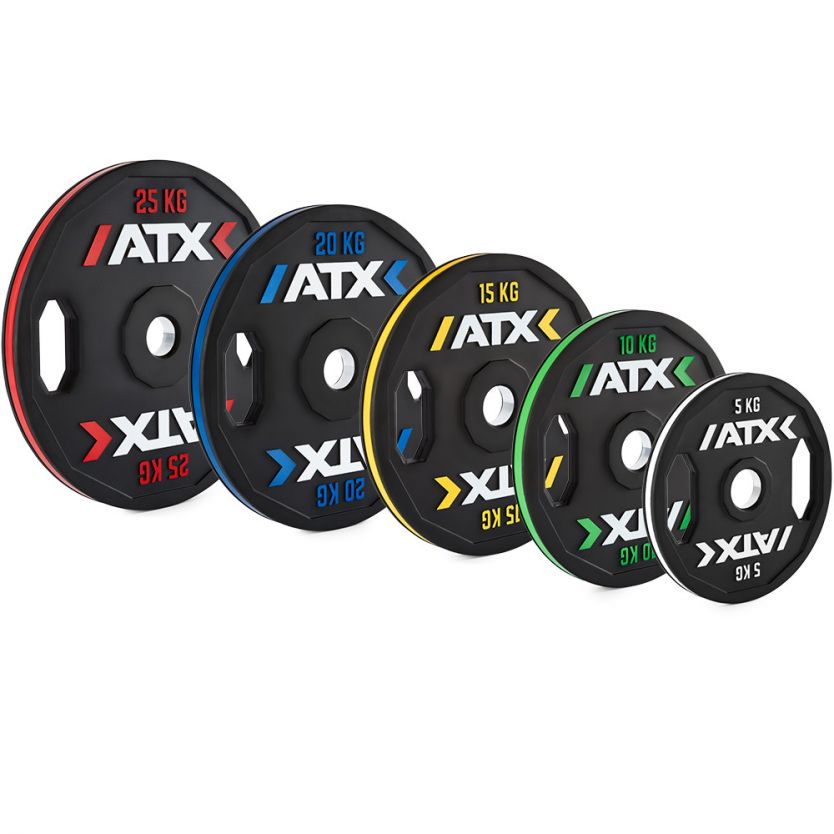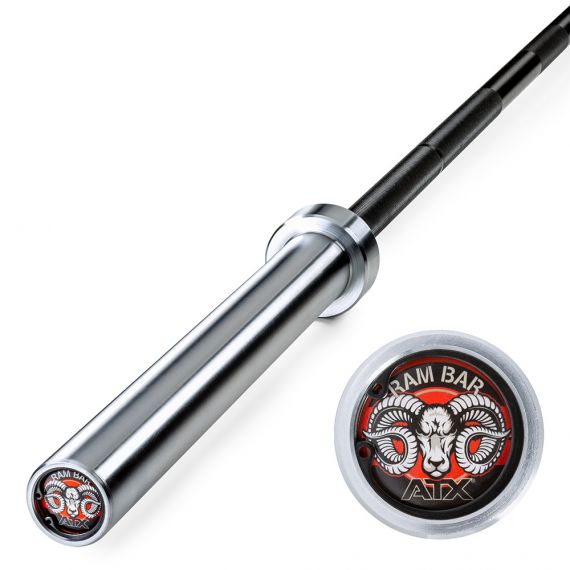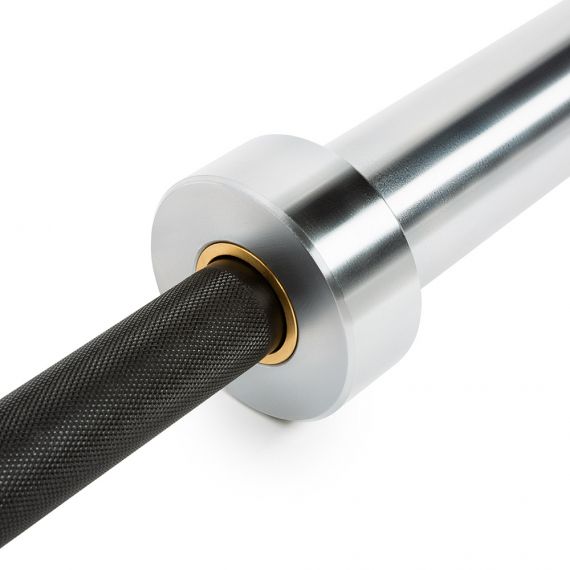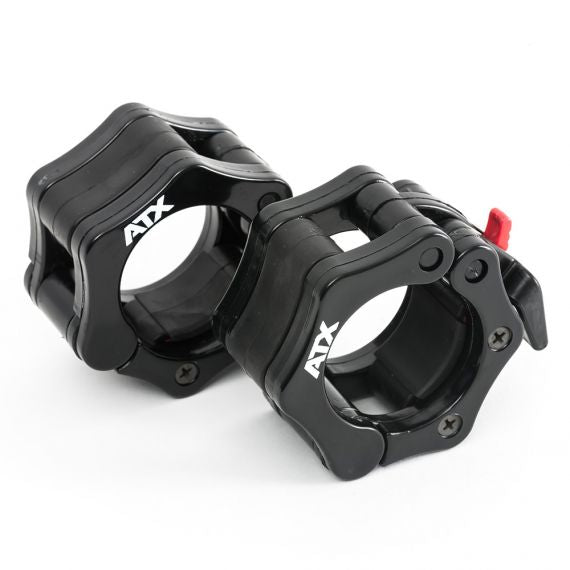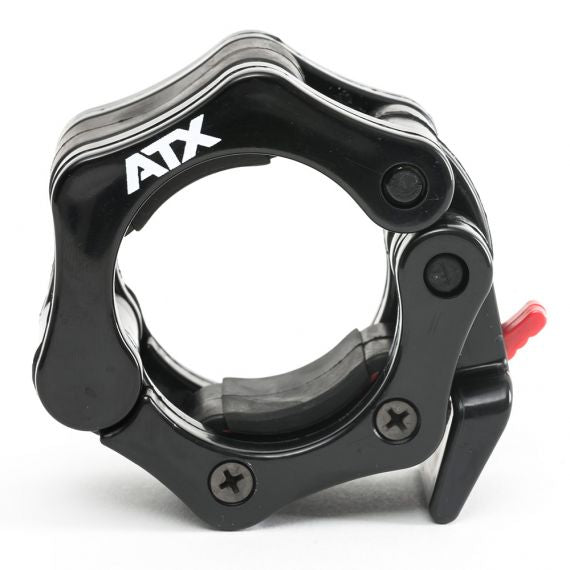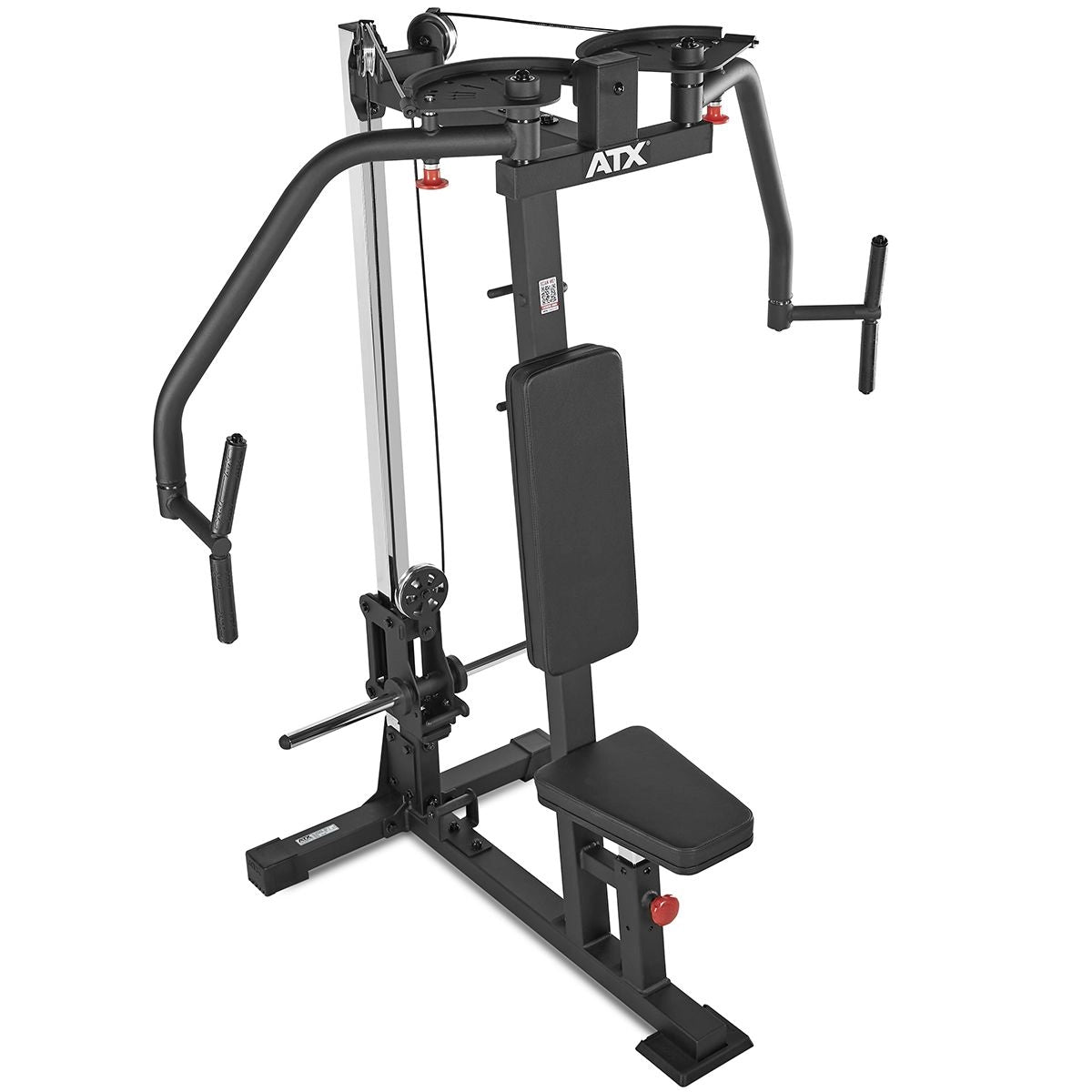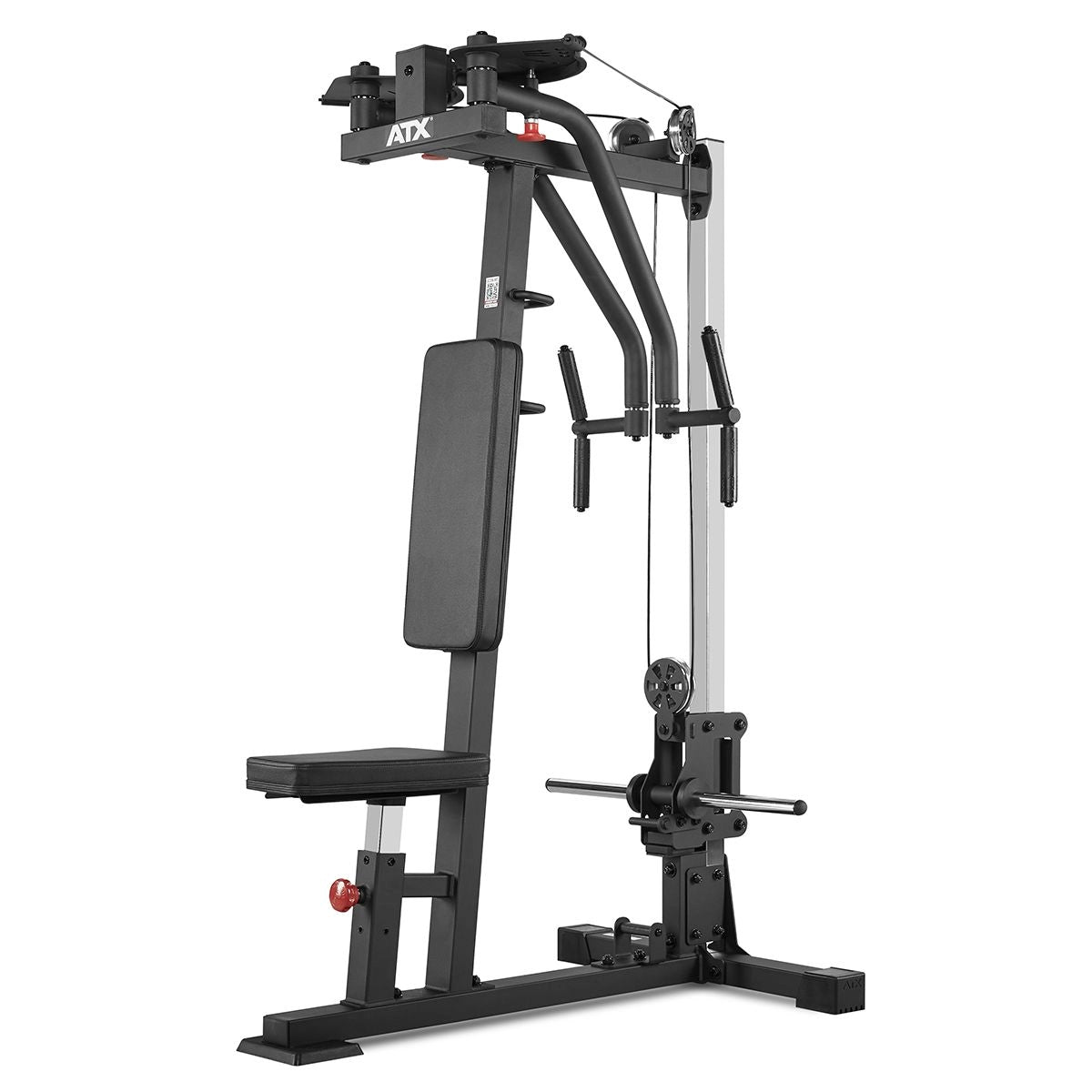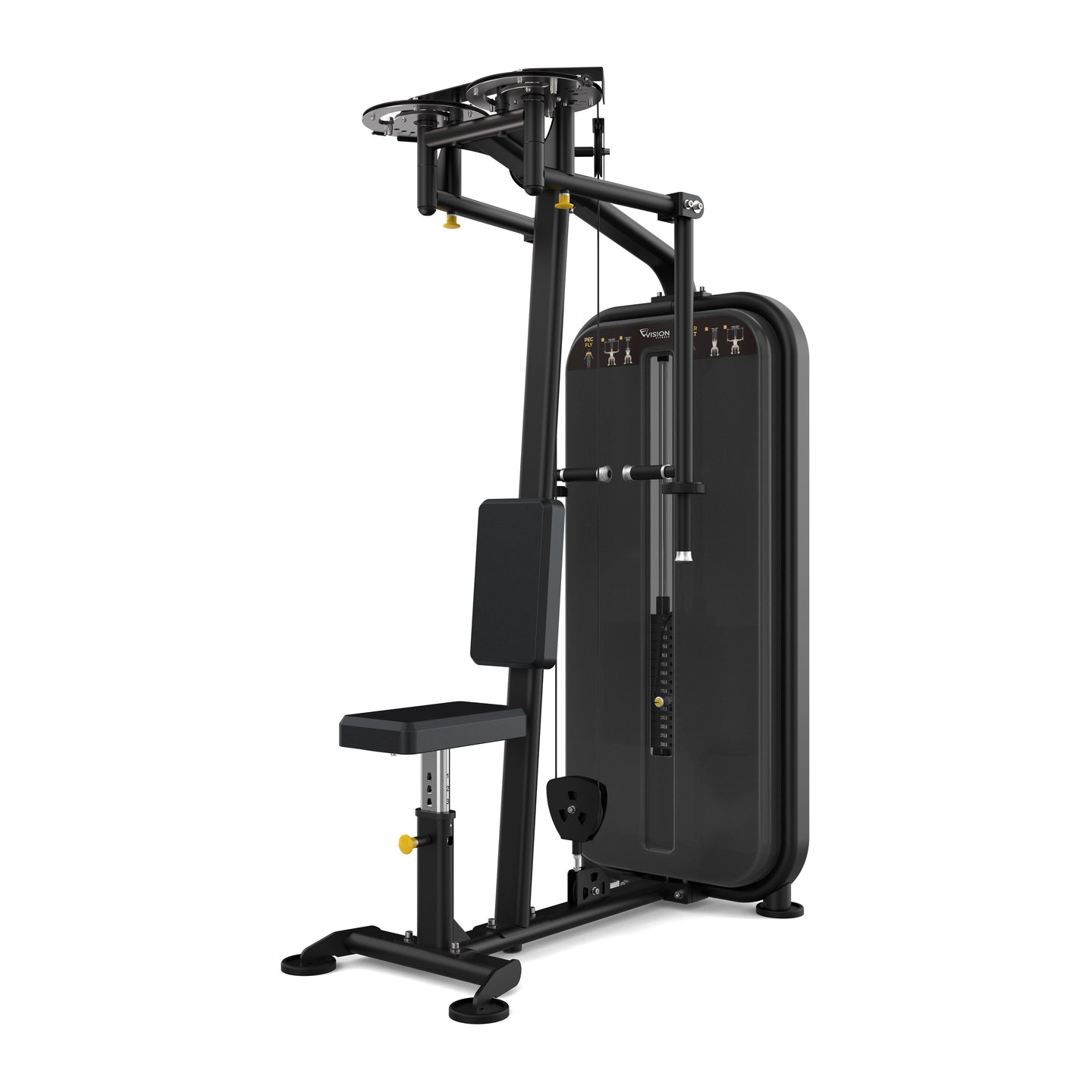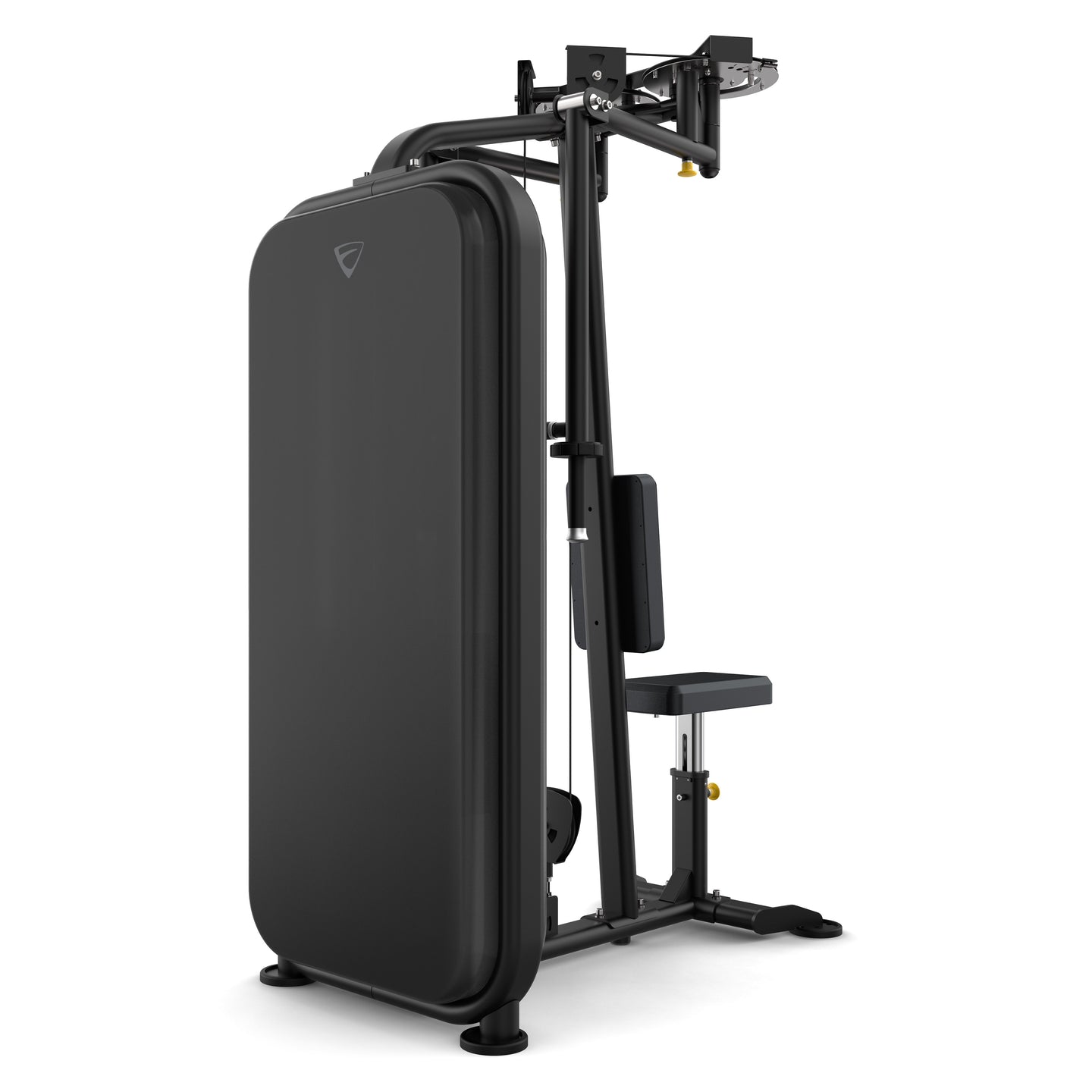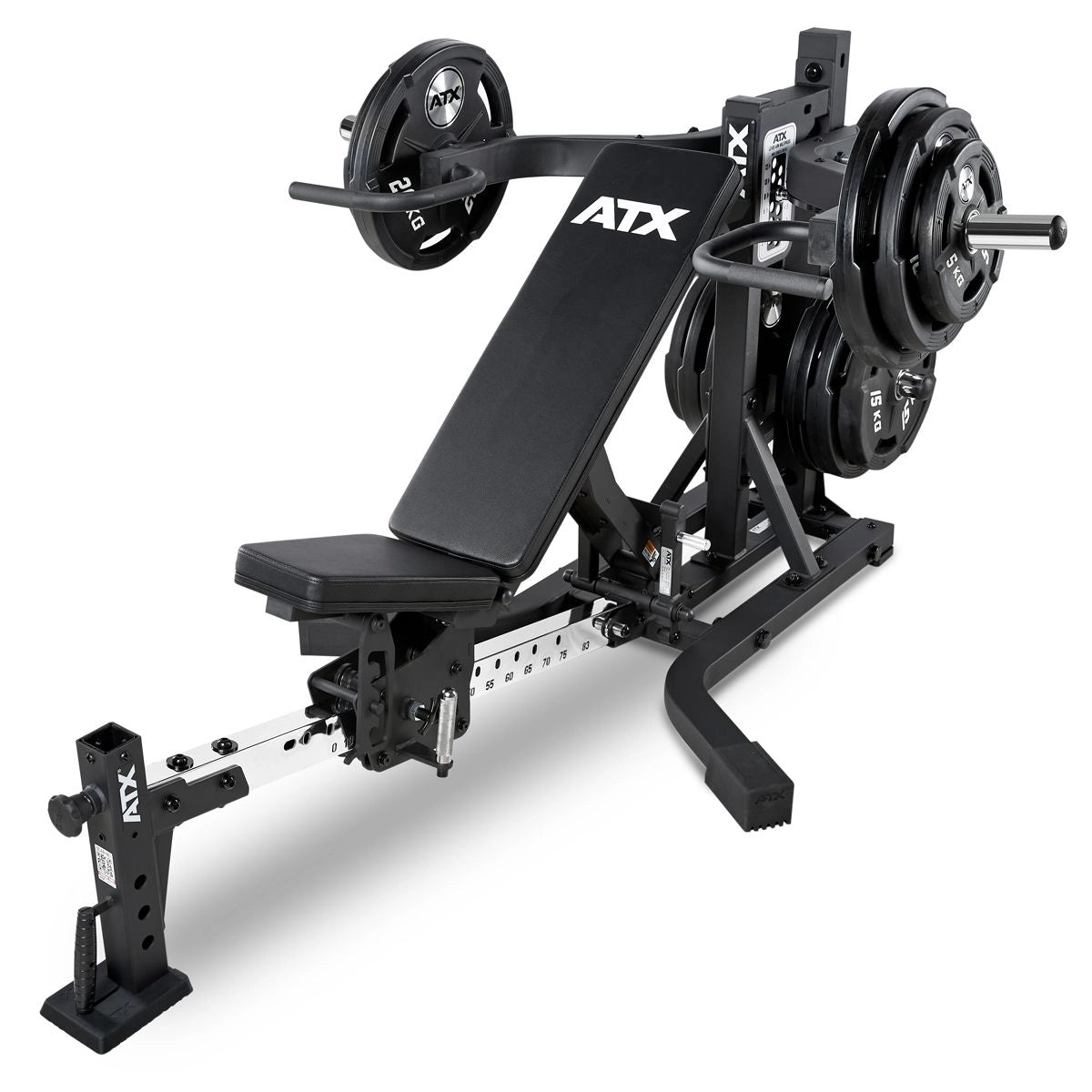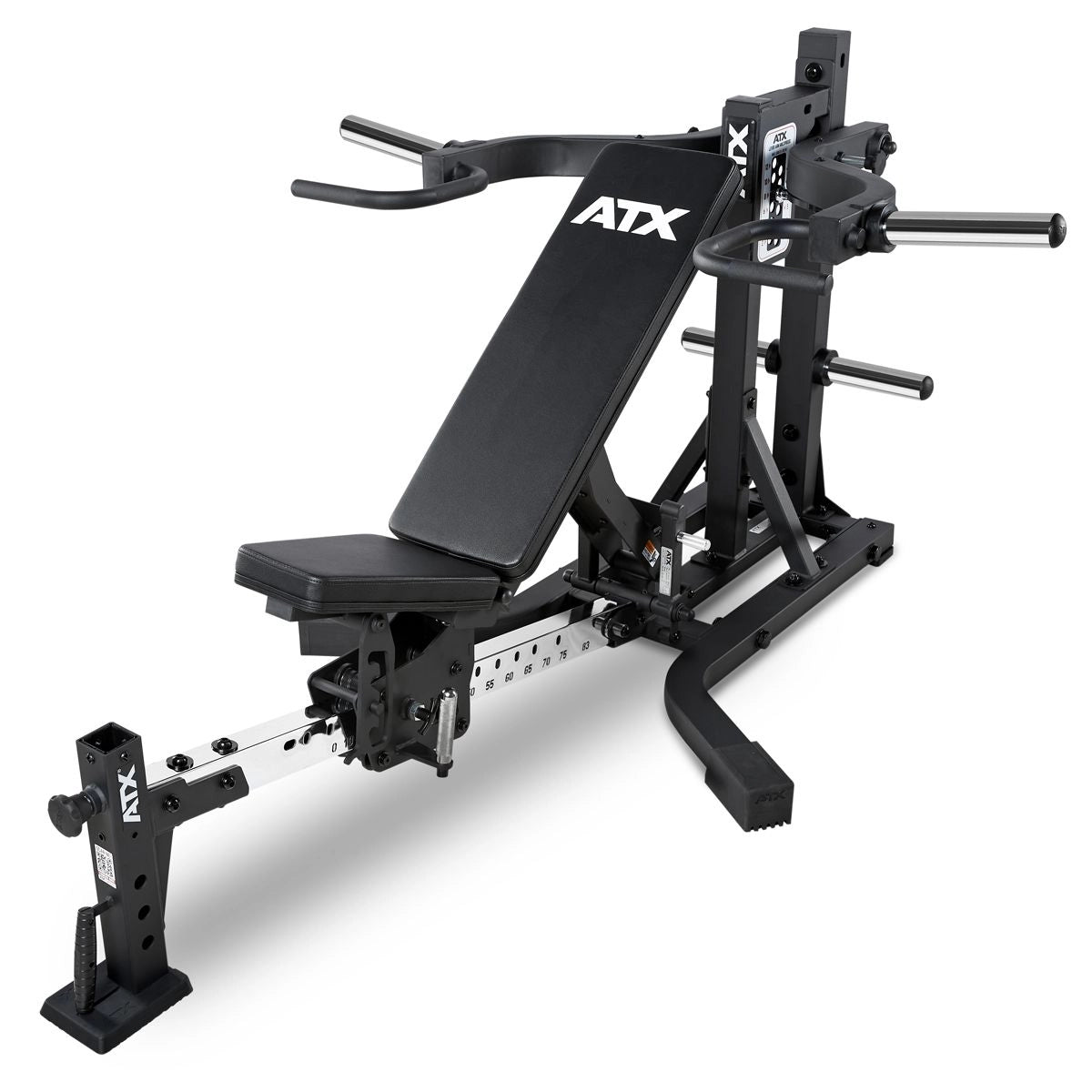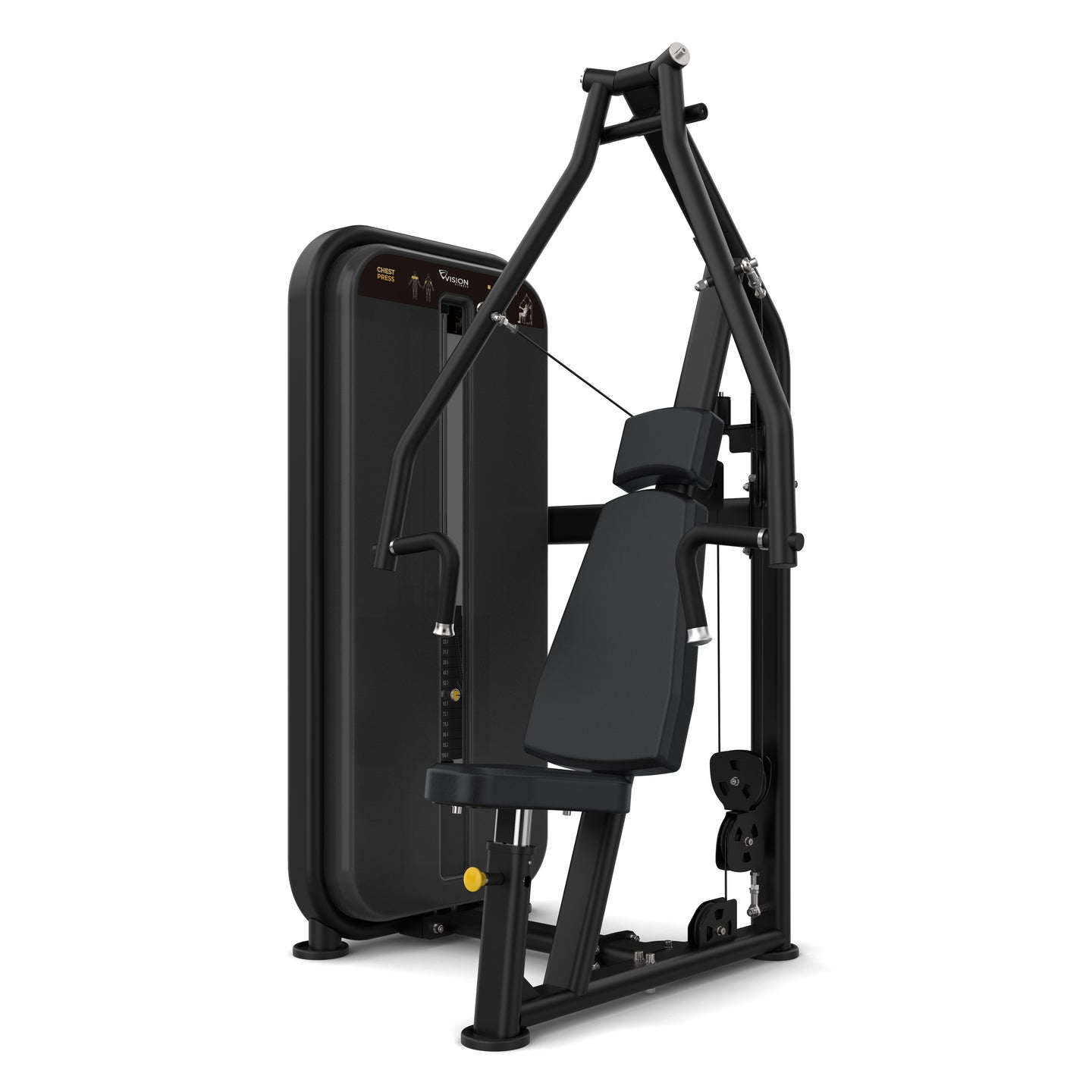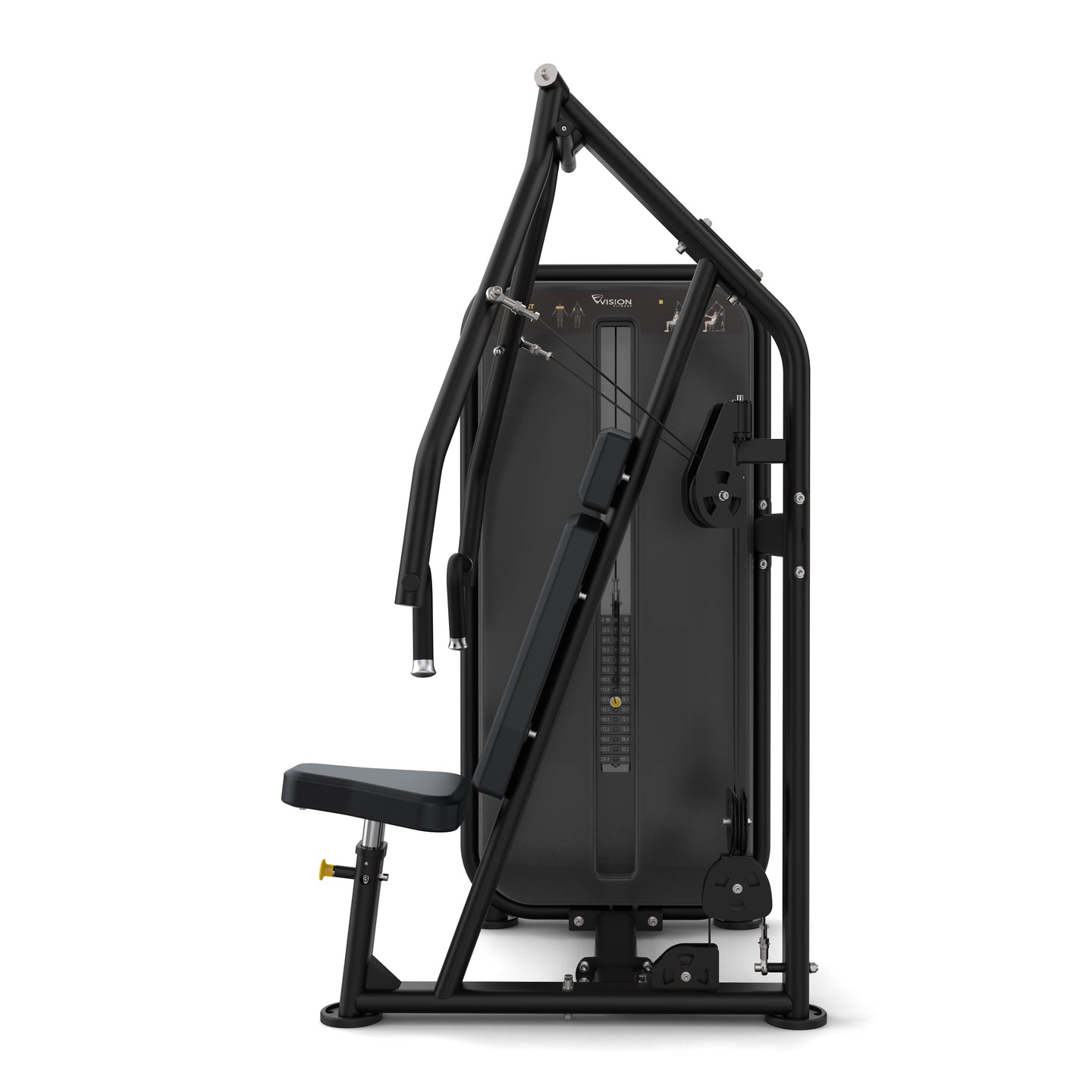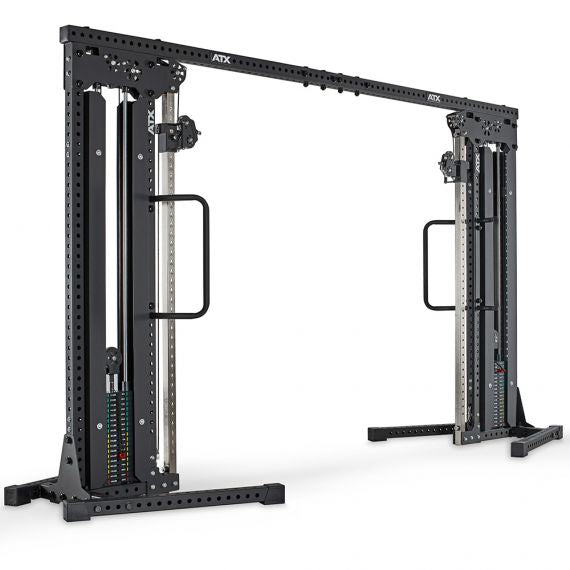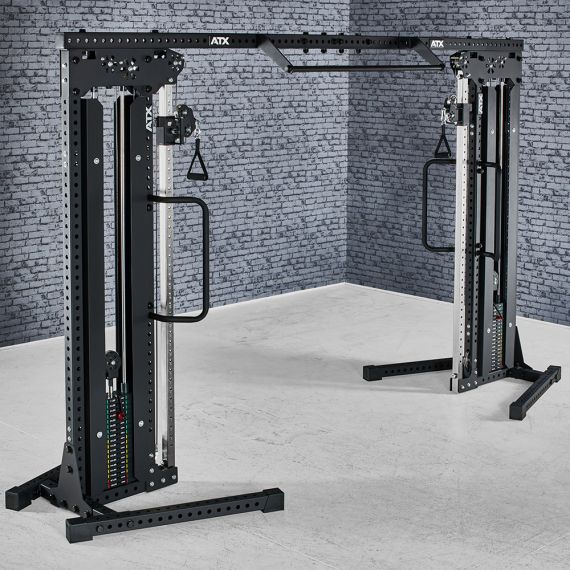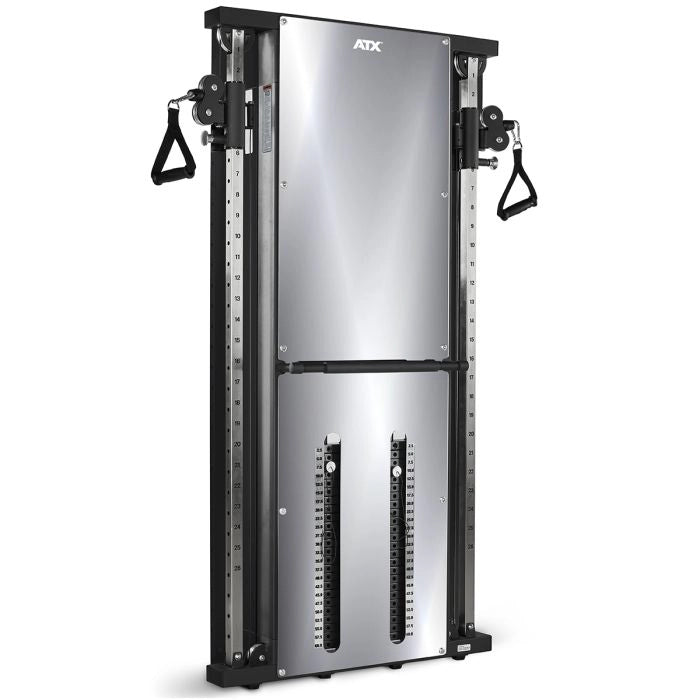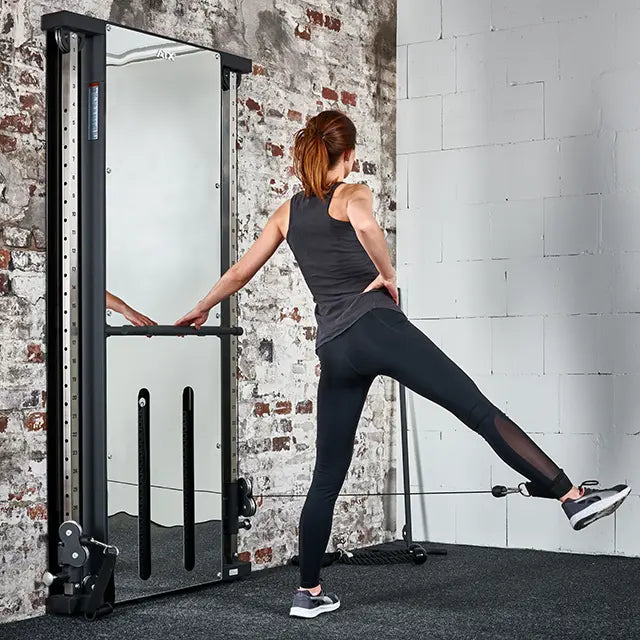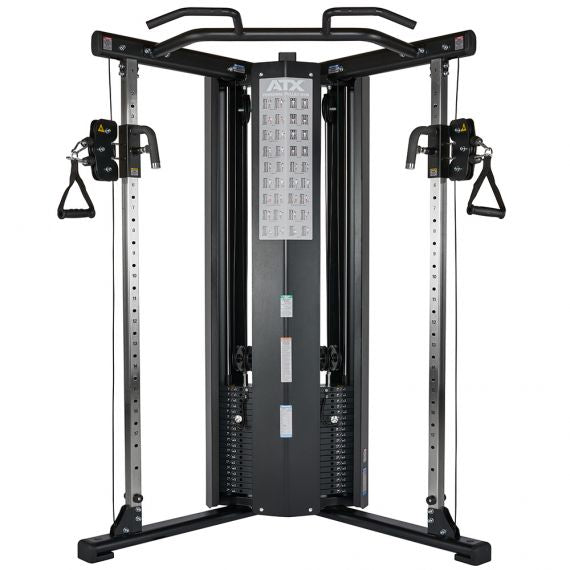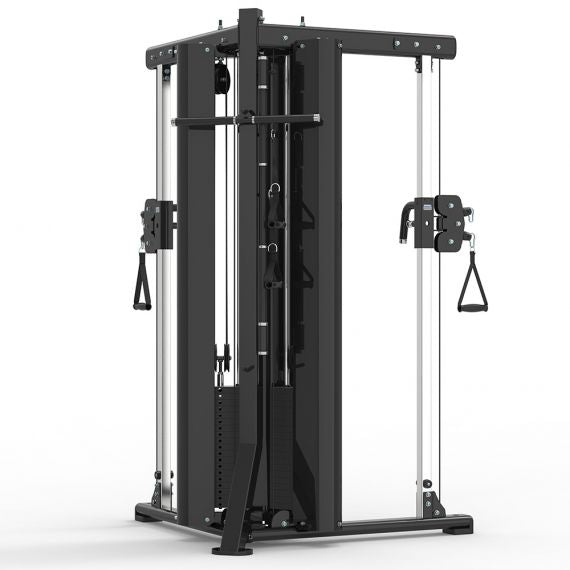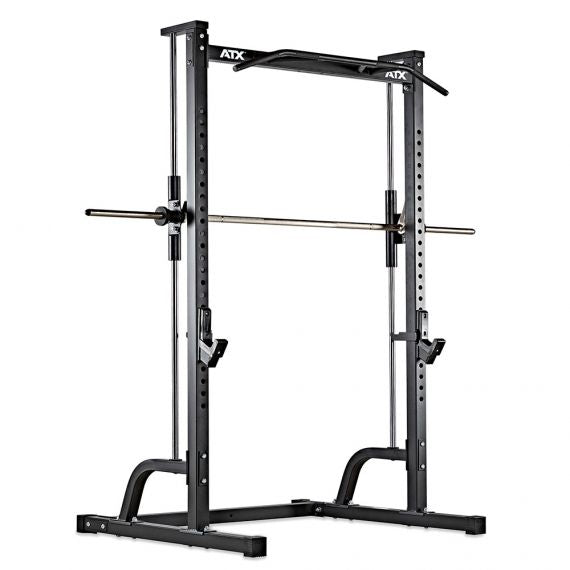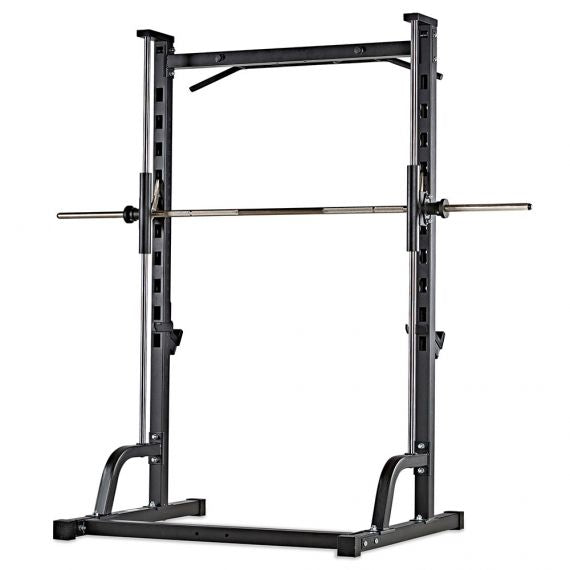Equipment for maximum performance.
Bench press with a barbell.
ATX® Multi Bench Press bench
ATX® Bench Press 700
Bench Press Olympic - Vision Fitness
Incline Bench Press - Vision Fitness
ATX® Combo Rack - IPF Approved
Insulation for perfection.
Isolated chest training.
ATX® Butterfly Machine - Reverse 3025
Butterfly / Reverse Stack Weight Machine - Vision Fitness
ATX® Lever Arm Multipress
Chest Press Stack Weight - Vision Fitness
ATX® Cable Crossover cable pull station
ATX® Dual Wall Pull Station Mirror - with 2 x 60 kg plug-in weights
ATX® Dual Pulley Functional Trainer Compact
ATX® Multipress 620
A well-trained, strong chest is one of the classic symbols of physical strength and aesthetics. Whether you're interested in building muscle, defining your upper body, or improving your athletic performance, chest training plays a key role. In this comprehensive guide, you'll learn everything you need to know about targeted chest training with fitness equipment: which equipment you should use, how to best train, and which exercises are particularly effective. We'll also show you the advantages of machines over free weights.
Why chest training is so important
The chest muscles consist of the large chest muscle (pectoralis major), the small chest muscle (pectoralis minor) and supporting muscles such as the anterior serratus muscle (musculus
serratus anterior). Together, they enable movements such as squeezing, hugging, lifting, and stabilizing the shoulder joint. A well-developed chest not only improves posture but also supports numerous functional movements in everyday life and sports—from push-ups to swimming.
A strong chest provides more power during pushing movements, protects the shoulder joints, and looks good, too. Especially in combination with strong shoulder and back muscles, the chest ensures an upright posture , body tone, and symmetry.
What is the best way to train your chest?
To get the most out of your chest workout, you should focus on variation , technique , and targeted muscle activation . An effective chest workout doesn't just consist of one exercise, but combines different stimuli to target the entire musculature. The most important thing is:
- Train your chest from different angles : horizontal, oblique (upper chest) and negative (lower chest).
- Focus on both compound exercises and isolation exercises : This way you ensure that all muscle fibers are addressed.
- Work with progressive overload : Increase the weight, repetitions, or intensity over time.
- Pay attention to proper execution : Only those who train correctly will achieve sustainable progress and avoid injuries.
A typical chest workout consists of 2–4 exercises with between 8 and 15 repetitions per set. Rest intervals should be between 30 seconds (hypertrophy) and 90 seconds (strength), depending on your training goal.
Which chest exercise is the most effective?
Many people ask themselves: Which exercise is best for building breasts? The answer: There is no single best exercise – the most effective combination consists of different movement patterns . Nevertheless,
The following exercises are among the most effective
- Chest press (horizontal): Simulates the classic bench press – safe and effective.
- Incline bench : Activates the often neglected upper chest area.
- Butterfly / Pec Deck: Ideal for isolation and intensive muscle contact.
- Cable Crossover: Allows continuous tension and large range of motion.
- Smith Machine Bench Press: Combination of free weight and guided movement.
If you cleverly combine these exercises, you will achieve widespread muscle stimulation , strengthen the nerve-muscle interaction and ensure mass and definition in the long term.
Are three exercises enough for chest training?
Yes – three targeted exercises, when performed correctly and at the right intensity , are sufficient to optimally train your chest. The combination should meet the following criteria:
- Basic exercise for strength and mass (e.g. chest press or bench press on
the Smith Machine) - Exercise with a different angle (e.g. incline bench or cable pull from below)
- Isolation exercise (e.g. butterfly or cable crossover)
The rule is: quality over quantity. More exercises do not automatically mean better muscle building. What is crucial is targeted
Stimulate all parts of the pectoralis major muscle. With a structured plan and regular exercise rotation, you can achieve steady progress over the long term.
For effective and safe chest training, various pieces of equipment are available, each offering specific advantages in terms of muscle activation , movement control , and safety . They are particularly ideal for beginners, as they facilitate proper technique, and for advanced users, they can emphasize specific movements and balance weak points. Here's an overview of the most important pieces of equipment for chest training – including their areas of application and special features.
The chest press is a classic among chest training machines. It simulates the bench press in a guided format and is ideal for building strength and mass in the mid-chest area .
- Target muscles: Pectoralis major (middle part), triceps, front shoulder
- Use: Ideal for beginners and advanced users, especially for developing basic strength
- Advantages: Stable movement, low risk of injury, controllable even with heavy weight
The classic incline bench is a must for any effective chest workout—whether with dumbbells, a barbell, or a multi-press. The inclined position specifically targets the upper portion of the pectoralis major , giving the chest more volume and an athletic shape. Even in the machine version (e.g., incline bench press), it's an essential component of any upper-body workout.
- Target muscles: Upper pectoralis major, anterior shoulder muscles, triceps
- Use: For beginners with machines, for advanced users with free weights or Smith Machine
- Advantages: Promotes balanced breast development, variable inclination angles for individual focus, versatile
The butterfly is a pure isolation device and ideal for targeting and toning the chest muscles. Its range of motion is biomechanically optimal for contracting the inner chest area.
- Target muscles: Inner pectoralis major
- Use: Ideal for improving muscle feeling and for “pumping out” at the end of the workout
- Advantages: Intensive stretching and maximum contraction possible, especially effective with high volume
The cable machine is an extremely versatile piece of equipment for chest training. You can work from different angles —from above, in the middle, or below—and thus specifically target different chest areas.
- Target muscles: Entire chest, depending on the execution
- Use: Perfect for advanced users for isolation and fine shaping
- Advantages: Constant tension on the muscle, high range of motion, diverse grip variations
The Smith Machine allows for safe bench presses , incline bench presses, or decline presses – with controlled barbell movement . This reduces the risk of injury and allows for heavy training to muscle failure.
- Target muscles: Middle, upper or lower chest depending on bench position
- Use: For controlled, heavy training and technical improvement
- Advantages: No spotter required, high stability, combination of free weight feeling and machine safety
How often should you train chest?
The optimal training frequency depends on your training level , recovery capacity , and total volume . Generally, we recommend:
- For beginners: about 2-3 times per week in a full body workout or upper and lower body plan.
- For advanced users: Depending on the split, 1 to 2 times a week.
Chest muscles usually recover within 48 to 72 hours . This means that those who train intensively can target their chest muscles at full force twice a week. Allow sufficient recovery time between sessions to avoid overtraining.
What are the advantages of chest training with machines compared to free weights?
Training with equipment offers numerous advantages, especially for beginners or people with joint problems:
- Guided movement : Minimizes the risk of poor posture and overload.
- Safety : No spotter required – you train in a controlled manner until fatigue.
- Isolation ability : Individual muscle areas can be targeted.
- Easier progression : Fine weight increments allow targeted increases.
- Joint protection : Ideal angles and stable sitting positions ensure optimal strain.
- Advanced athletes also use machines in addition to free weights to specifically compensate for weaknesses or safely reach muscle failure.

